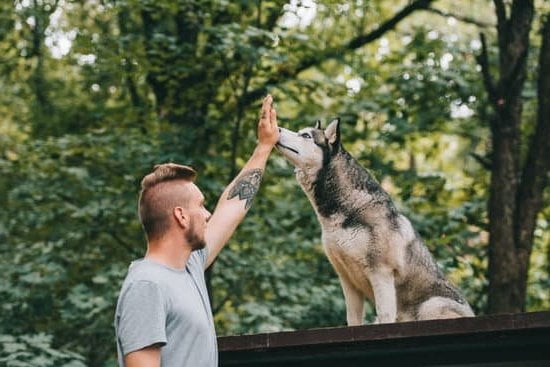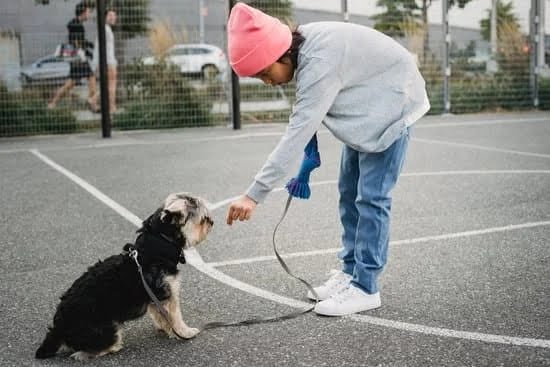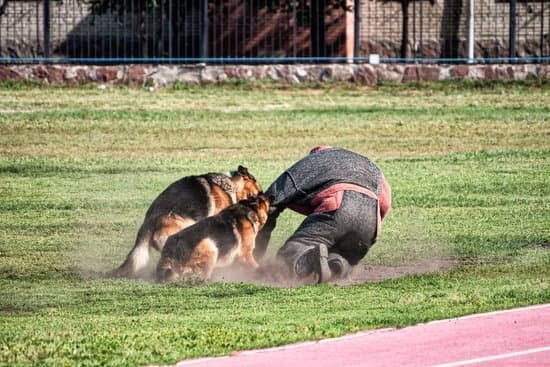Bed steps are a practical and valuable tool for dog owners who want to prioritize their furry friend’s safety and comfort. Training your dog in using bed steps can provide numerous benefits, ensuring ease of access to furniture and reducing the risk of injury. In this article, we will explore why bed steps are important for dogs and how you can successfully train your canine companion to use them.
Using bed steps allows dogs to easily climb up onto beds or other elevated surfaces without putting unnecessary strain on their joints or risking potential injuries from jumping. This is particularly beneficial for smaller or older dogs who may struggle with physical limitations. Bed steps also help prevent accidents caused by missed jumps, which can lead to painful injuries such as sprains or fractures.
However, it is essential to train your dog in using bed steps to ensure they fully understand how to utilize them safely and comfortably. Dogs have different behaviors, anxieties, and physical limitations that need to be considered during the training process. By understanding your dog’s unique needs and teaching them the proper techniques, you can create a positive experience that encourages regular use of bed steps.
Training your dog in using bed steps not only enhances their well-being but also promotes a strong bond between you and your furry companion. The following sections will guide you through understanding your dog’s behavior and needs, selecting the right bed steps, introducing your dog to the steps, building confidence, establishing commands or cues, troubleshooting challenges, maintaining consistency, considering safety precautions, and ultimately enjoying the benefits of having a well-trained dog proficient in using bed steps.
Understanding Your Dog’s Behavior and Needs
When it comes to training your dog on using bed steps, it is important to have a solid understanding of their behavior and needs. Dogs vary in size, physical abilities, and behavioral tendencies, all of which can impact their willingness to use bed steps. By taking the time to understand your individual dog, you can tailor the training process to best suit their needs and ensure their comfort and safety when using bed steps.
One key aspect to consider is your dog’s physical limitations. Smaller dogs may have a harder time climbing up onto higher beds, while older dogs may struggle with strength or mobility issues. It is important to choose bed steps that are appropriate for your dog’s size and capabilities. Taking into account these physical factors will help prevent any unnecessary strain or discomfort during training.
Another factor that may affect your dog’s willingness to use bed steps is any anxieties or behavioral issues they may have. Some dogs may be fearful of new objects or situations, while others may simply be resistant to change.
If your dog shows signs of anxiety or fear towards the bed steps, it is important to address these concerns before proceeding with training. This can be done through gradual desensitization techniques or by seeking the guidance of a professional trainer.
To ensure success in training your dog on using bed steps, here are some tips:
- Take note of your dog’s physical limitations such as size, age, and any mobility issues.
- Consider any anxieties or behavioral issues that your dog may have.
- Choose appropriate bed steps based on these factors.
By understanding your dog’s behavior and needs, you can approach training them on using bed steps in a way that is tailored to their individual requirements. This will make the training process more effective and enjoyable for both you and your furry friend.
Sources:
- BedStepTraining.com.
- TheDogTrainer.com.
Choosing the Right Bed Steps for Your Dog
When it comes to training your dog in using bed steps, selecting the appropriate steps is a crucial step in the process. The right bed steps can make all the difference in ensuring your dog’s safety and comfort while navigating onto and off of your bed. Here are some tips for choosing the right bed steps for your furry friend:
- Consider your dog’s size, age, and the height of your bed: Take into account your dog’s size and weight when selecting bed steps. Larger dogs may require sturdier and more durable steps that can support their weight. Additionally, consider the age of your dog as well – if you have a senior or arthritic dog, you may opt for steps that are lower to the ground or have a gentle incline.
- Stability: Look for bed steps that are stable and secure. It is important that the steps don’t wobble or slide when your dog is using them to prevent accidents or injuries. Check for features such as sturdy construction, non-slip surfaces on each step, and rubber grips on the bottom to ensure stability.
- Material and ease of assembly: Consider what material the bed steps are made of. Some common materials include plastic, wood, or metal. Each material has its own advantages and disadvantages, so choose one that best suits your needs and preferences. Additionally, think about whether you prefer pre-assembled steps or ones that require minimal assembly.
Before purchasing any bed steps, it is always a good idea to measure both the size of your dog and the area where you plan to place the steps beside your bed. This will help ensure a proper fit and allow for easy access for your pup without taking up too much space in your bedroom.
By choosing suitable bed steps for your dog’s specific needs, you are setting them up for success in their training journey to safely use these stairs towards quality rest on your bed.+.
Introducing Your Dog to the Bed Steps
Step-by-step guide on introducing your dog to the bed steps
When introducing your dog to bed steps, it is important to take a gradual approach and make the experience positive and enjoyable for them. Here is a step-by-step guide on how to introduce your dog to the bed steps:
- Familiarize your dog with the steps: Begin by placing the bed steps in an area where your dog spends time, such as near their bed or favorite resting spot. Allow them to sniff and investigate the steps at their own pace.
- Use treats and praise: To encourage your dog’s interest in the bed steps, use positive reinforcement techniques. Place treats or small toys on each step, pointing them out to your dog. As they show curiosity or approach the steps, reward them with verbal praise and a treat.
- Get your dog accustomed to stepping onto the first step: Start by luring your dog with a treat so that they place one paw on the lowest step. Praise and reward them for this behavior. Gradually increase the number of paws they place on the step until they are confidently standing with all four paws on it.
- Progressively introduce more steps: Once your dog is comfortable with using one step, encourage them to move up to higher ones by repeating the process of luring with treats. Gradually increase their confidence by moving up one step at a time until they can successfully climb all of them.
- Practice regularly: Consistency is key when training dogs, so incorporate regular practice sessions into their routine. Make sure to provide positive reinforcement each time they use the bed steps correctly.
Using positive reinforcement and rewards to encourage your dog’s interest and curiosity towards the steps
Positive reinforcement plays a vital role in introducing dogs to new experiences like using bed steps. Here are some ways you can use positive reinforcement techniques during training:
- Treats: Use small and tasty treats that your dog loves as a reward for each successful interaction with the bed steps. Offer the treat immediately after they perform the desired behavior, such as stepping onto a new step or climbing all the steps.
- Verbal praise: Along with treats, provide verbal praise in an enthusiastic and cheerful tone. Say phrases like “Good job.” or “Well done.” to let your dog know they have done something right. Dogs respond well to positive vocal cues.
- Toys and playtime: Incorporate playtime into your training sessions by using their favorite toys. Play a short game of fetch or engage in a quick play session after each successful attempt with the bed steps. This will help create positive associations and make the training experience enjoyable for your dog.
Remember to be patient and understanding during the training process. Each dog learns at their own pace, so don’t rush them or become frustrated if progress is slow. Training should always be a positive experience for both you and your furry friend.
Gradual training methods to ease your dog into using the steps comfortably and independently
It is important to take baby steps when training your dog to use bed steps, especially if they are initially hesitant or anxious about it. Here are some gradual training methods to help ease your dog into using the steps comfortably and independently:
- Start with lower height options: If you have adjustable bed steps, begin by setting them at a lower height initially. This will allow your dog to build confidence in using them before gradually increasing the height.
- Use additional support if needed: Some dogs may feel more comfortable when there is extra support available while using bed steps. Consider placing a sturdy piece of furniture nearby that they can step onto before scaling the rest of the way onto the bed steps.
- Gradually decrease assistance: As your dog becomes more confident, start reducing the amount of assistance you provide. Instead of guiding them with treats or luring them onto each step, encourage them to climb independently by using the verbal command or visual cue associated with the bed steps.
- Regular practice and repetition: Consistency and repetition are key when it comes to training dogs. Incorporate regular practice sessions into your dog’s routine and gradually increase the level of difficulty as they become more comfortable. This will help reinforce their training and ensure long-term success in using bed steps.
By taking a gradual approach, providing positive reinforcement, and incorporating regular practice, you can help your dog overcome any anxieties or fears associated with using bed steps. With time and patience, your dog will gain confidence and independence in navigating their way onto the bed safely and comfortably.
Building Confidence in Your Dog
Once your dog has become familiar with the bed steps and is comfortable using them, it is important to build their confidence in using the steps independently. This will help them feel more secure and less reliant on your assistance when accessing the bed. By building their confidence, you can ensure that they use the bed steps consistently and without hesitation.
One technique for building your dog’s confidence in using the bed steps is to gradually increase the height or difficulty level. Start by placing the steps at a low height that your dog feels comfortable with.
Slowly increase the height of the steps over time, allowing them to conquer each level before moving on to the next. This incremental approach will prevent your dog from feeling overwhelmed and allow them to gain confidence as they successfully navigate each increased challenge.
Another effective method for building confidence is through positive reinforcement. Whenever your dog uses the bed steps independently, shower them with praise, treats, or their favorite toy as a reward. This positive association will motivate and encourage them to continue using the bed steps confidently. Additionally, you can try placing enticing treats or toys on each step as a way to further entice your dog to explore and conquer the stairs.
It’s important to remember that every dog is unique and may require varying degrees of time and patience when it comes to building confidence. Be patient with your furry friend as they adjust to higher heights or unfamiliar surfaces. Celebrate each small achievement along the way and provide gentle encouragement if they seem hesitant or unsure about using the stairs independently.
By consistently implementing these techniques and providing positive reinforcement, you can help your dog build their confidence in using bed steps. Over time, they will become more self-assured in their ability to navigate stairs safely and comfortably, enhancing their overall quality of life while also bringing peace of mind to pet owners.
Establishing a Command or Cue for Using the Bed Steps
When training your dog to use bed steps, it is important to establish a clear command or cue that signals to your dog when they are expected to use the steps. This helps your dog understand what is expected of them and reinforces their understanding of using the bed steps as part of their routine.
Having a verbal command or visual cue is essential in communicating with your dog and teaching them the desired behavior. Here are some training methods you can use to establish a command or cue for your dog to associate with using the bed steps:
- Consistent Word Association: Choose a specific word or phrase that you will consistently use whenever you want your dog to use the bed steps. It could be something simple like “up” or “bed stairs.” Use this word every time you guide your dog towards the steps and reward them once they have successfully used them. Over time, your dog will associate the verbal command with using the bed steps.
- Clicker Training: If you prefer a more clicker-based approach, you can also use a clicker as a way to mark the behavior of going up and down the bed steps. Each time your dog approaches and uses the steps, click and give them a treat as positive reinforcement. Eventually, they will start associating the click sound with using the bed steps, allowing you to phase out treats slowly.
- Visual Cues: In addition to verbal commands, visual cues can also be effective in communicating with dogs. You can try incorporating hand signals such as pointing towards the steps or using a specific gesture whenever you want your dog to use the bed steps. Pair these visual cues with verbal commands for better clarity and consistency.
Remember that consistency is key when establishing a command or cue for using bed steps. Always use the same word or signal during training sessions and reinforce positive behavior with rewards and praise. With time and practice, your dog will understand the command or cue and use the bed steps confidently and independently.
| Training Method | Description |
|---|---|
| Consistent Word Association | A specific word or phrase is consistently used to guide the dog towards using the bed steps. |
| Clicker Training | A clicker is used to mark the behavior of using the bed steps, followed by a treat as positive reinforcement. |
| Visual Cues | Hand signals or gestures are used alongside verbal commands to guide the dog towards using the bed steps. |
Troubleshooting Common Challenges
Addressing Fear or Anxiety
One common challenge that dog owners may encounter when training their dogs to use bed steps is fear or anxiety. Some dogs may be naturally cautious or anxious about new objects or situations, and this can make them hesitant to try using the bed steps. To address this challenge, it is important to take a patient and gradual approach.
Start by introducing your dog to the bed steps in a calm and controlled environment. Allow them to sniff and explore the steps at their own pace without any pressure. You can also try placing treats or their favorite toy on the steps to encourage them to investigate further. When your dog shows any positive interest or progress, reward them with praise and treats to reinforce their confidence.
If your dog continues to show fear or anxiety towards the bed steps, it may be helpful to consult a professional dog trainer or behaviorist for additional guidance. They can provide specialized techniques and strategies for overcoming fear-based challenges and helping your dog feel more comfortable and confident with the bed steps.
Resistance from Stubborn Dogs
Some dogs are simply stubborn by nature, which can make the training process more challenging. If you find that your dog is resistant to using the bed steps despite consistent training efforts, there are several strategies you can try.
Firstly, ensure that you are offering plenty of positive reinforcement throughout the training process. Use treats, praise, and playtime as rewards for successfully using the bed steps or even showing small signs of progress.
Additionally, breaking down the training into smaller steps can help a stubborn dog feel less overwhelmed. Start by rewarding your dog for simply approaching the bed steps, then gradually build up to encouraging them to place one paw on the first step, then eventually progress towards climbing all the way up onto the bed.
Remember that consistency is key when working with stubborn dogs. Stick to a regular training schedule and avoid giving in to your dog’s resistance. With time and patience, even the most stubborn dogs can learn to use bed steps.
Overcoming Reluctance
Some dogs may simply be reluctant or uninterested in using bed steps initially. In these cases, it is important to use positive reinforcement and make the training process enjoyable for your dog.
You can try incorporating games or play into the training sessions to make them more engaging. For example, scatter treats on each step of the bed steps and encourage your dog to find them. This will not only encourage their curiosity but also associate the bed steps with a positive and rewarding experience.
Additionally, making the bed steps more inviting by adding familiar scents or using their favorite blanket or toy as encouragement can help overcome reluctance. Make sure to offer lots of praise and rewards when your dog shows any willingness to approach or use the bed steps. Over time, they will begin to associate these positive experiences with the bed steps and become more willing to use them regularly.
By addressing common challenges such as fear or anxiety, resistance from stubborn dogs, and overcoming reluctance through patience, positive reinforcement, and consistency, you can successfully train your dog in using bed steps for improved safety and comfort.
Consistency and Maintenance
Once you have successfully trained your dog to use bed steps, it is important to maintain consistency in their training routine. Consistency will help reinforce the behavior and ensure that your dog continues to use the steps regularly. Here are some tips for maintaining consistency and ensuring the long-term success of your dog’s training:
- Regular Practice: Make a habit of practicing with your dog on a daily basis. This will help reinforce their understanding of using the bed steps and keep their skills sharp. Set aside a specific time each day for training sessions, even if it is just for a few minutes.
- Reinforcement: Continue to provide positive reinforcement whenever your dog successfully uses the bed steps. This can be in the form of verbal praise, treats, or affectionate pats. The more you reward your dog for using the steps, the more motivated they will be to continue doing so.
- Gradual Progression: As your dog becomes more comfortable with using the bed steps, you can gradually increase the difficulty level by raising the height or introducing obstacles. This will help challenge your dog’s abilities and keep them engaged in their training.
- Monitoring: It is important to monitor your dog’s behavior while they are using the bed steps to ensure their safety and prevent any accidents. Observe if they are using proper form and if they appear relaxed during the process. If you notice any signs of discomfort or hesitation, it may be necessary to reassess their training or check for any physical issues that could be causing difficulties.
Maintaining consistency in your dog’s training is key to ensuring their continued use of bed steps and reaping all the benefits they provide. By following these tips and incorporating regular practice sessions into your daily routine, you can establish a strong foundation of trained behavior that will benefit both you and your furry friend in the long run.
| Tips for Consistency and Maintenance |
|---|
| Regular Practice |
| Reinforcement |
| Gradual Progression |
| Monitoring |
Safety Considerations and Precautions
When training your dog to use bed steps, it is important to prioritize their safety and take necessary precautions. While bed steps can be extremely helpful for dogs, there are a few considerations to keep in mind to ensure that the training process goes smoothly and without any accidents.
Firstly, it is crucial to select bed steps that are stable and sturdy. Look for steps that have a non-slip surface or grip material on each step to prevent your dog from slipping or losing balance. Additionally, consider the weight capacity of the bed steps and choose ones that can support your dog’s weight comfortably.
It is also important to ensure that the bed steps are securely positioned. Make sure they are placed against the side of the bed or against a wall so that they do not slide or move while your dog is using them. If necessary, use adhesive strips or anti-slip mats under the feet of the bed steps to provide extra stability.
While training your dog on using bed steps, always supervise them closely and be attentive to their behavior. Watch for any signs of discomfort or fear and proceed accordingly. Some dogs may initially be hesitant or afraid of using the steps, so patience is key during this part of the training process.
Consider providing additional support for your dog as they use the bed steps. This can be done by being close by to offer a hand for support if needed, especially during the initial stages when they are still learning how to navigate the steps confidently.
Finally, never force your dog to use the bed steps if they show extreme resistance or fear. Instead, reassess their readiness for training and consult with a professional trainer if necessary. Remember that every dog is unique, and some may require more time and patience than others in order to feel comfortable using the bed steps.
By following these safety considerations and taking necessary precautions throughout the training process, you can ensure that your dog gains confidence in using the bed steps while remaining safe and secure. With time and consistent reinforcement, your dog will reap the benefits of independent access to their bed, improving their overall comfort and well-being.
Conclusion
In conclusion, training your dog to use bed steps brings a multitude of benefits for both you and your furry friend. By investing the time and effort in properly introducing and teaching your dog how to use bed steps, you are ensuring their safety and comfort when getting on and off the bed. Understanding your dog’s behavior, needs, and physical limitations is crucial in choosing the right bed steps that suit them best.
Through positive reinforcement and gradual training methods, you can build your dog’s confidence in using the bed steps independently. Establishing a command or cue for using the bed steps further enhances their understanding and association with this new routine. With consistency in training and proper maintenance of the bed steps, you can ensure that your dog will continue to confidently navigate their way onto the bed.
Not only does training your dog on using bed steps provide them with ease of access to the bed, but it also promotes their overall well-being by reducing strain on their joints. Additionally, it offers peace of mind for pet owners who may worry about potential injuries from jumping on or off furniture.
Frequently Asked Questions
Will dog use stairs for bed?
Whether or not a dog will use stairs for bed depends on a few factors. Firstly, it’s important to consider the breed and age of the dog. Some breeds, especially larger ones or those with joint problems, may have difficulty navigating stairs due to their size or physical limitations.
Additionally, older dogs may find it challenging to climb up and down stairs comfortably. However, many dogs can be trained to use stairs if introduced properly and given positive reinforcement. It may require some patience, encouragement, and possibly even treats as incentives for the dog to associate the stairs with their bed.
How do I teach my dog to use couch stairs?
Teaching a dog to use couch stairs can be done through a gradual and positive training process. Start by introducing your dog to the stairs by placing them close to the couch without any expectation of using them right away. Allow your dog to get comfortable with the presence of the stairs before moving on.
Next, guide your dog up and down the first step while offering encouragement and rewards each time they make progress. Gradually increase the number of steps until your dog is comfortable using all of them independently. Patience is key during this process, as each dog learns at their own pace.
Is a ramp or stairs better for dogs?
Determining whether a ramp or stairs are better for dogs depends on several factors such as the individual needs of the dog, their age, size, and any existing health conditions they may have. Ramps are often recommended for smaller dogs or those with joint problems like arthritis because they provide a more gradual incline that decreases stress on their joints when compared to climbing stairs. However, some dogs may find ramps difficult initially due to their unfamiliarity with them or fear of heights.
On the other hand, stairs are generally suitable for larger dogs with no joint issues as they allow easier access to higher surfaces like beds or couches. Ultimately, considering your specific dog’s needs and consulting with a veterinarian can help determine whether ramps or stairs would be more suitable.

Welcome to the blog! I am a professional dog trainer and have been working with dogs for many years. In this blog, I will be discussing various topics related to dog training, including tips, tricks, and advice. I hope you find this information helpful and informative. Thanks for reading!





